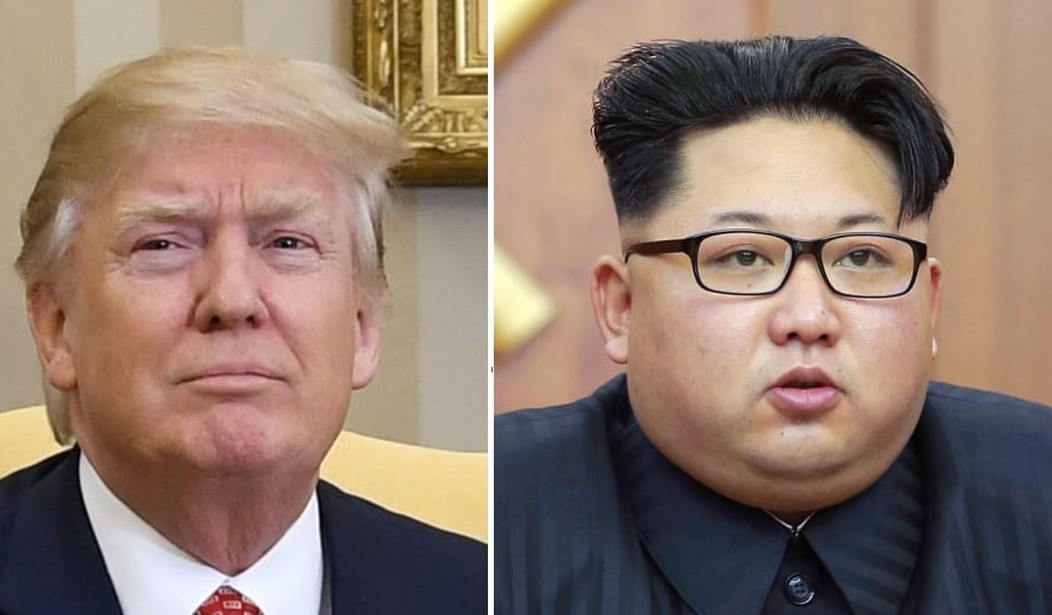Ever since the North and South Korean economies diverged from near parity in their early 1970s to their current disproportion, Pyongyang has been looking for a way to offload the resulting risk. Charts from the BBC gives some sense of the immense tension that must be somehow dissipated. By 2015 South Koreans had 19 times more cell phones, were 3 inches taller and had a per capita GDP nearly 20x higher than their Northern brethren. This tension had to go somewhere if the Kim regime was to survive.
The dynasty adopted the strategy of exporting the risk. Until recently North Korea lived off payoffs from its neighbors, the very nations it threatens. “Large swathes of North Korea’s population have suffered from chronic malnutrition since the mid-1990s. Food aid—largely from China, South Korea, and the United States—has been essential in filling the gap between North Korea’s supply and demand.”
They paid up to avoid trouble. By passing the hot potato to allies the Kim regime could maintain its bare survival.
Pyongyang could extort these payoffs because of its supposed near-nuclear level artillery threat to South Korean cities. In 1995 the Defense Intelligence Agency noted “the continued deployment of long-range artillery systems (240-mm multiple rocket launchers and 170-mm self-propelled guns) near the DMZ. … capable of targeting areas as Far South as Seoul.”
The Nokor threat even acquired a name: the Sea of Fire. In 2009 the New York Times gave an example of its hold over decision-makers’ minds. “In 1994, the United States was prepared to attack the North Korean nuclear complex, says Kim Young-sam, who was South Korea’s president at the time … ‘I said absolutely no to the United States unilaterally bombing Yongbyon,’ Mr. Kim said. ‘The North Korean artillery would have been rolling out within three minutes, and Seoul would have turned into a sea of fire.'”
Fear of the sea of fire held strategists in thrall for more than a decade.
But military technology rarely stands still. In much quoted study published in 2012 Roger Cavados of the Nautilus Institute convincingly called into question Pyongyang’s ability to turn South Korea’s cities into a Sea of Fire in the face of new allied capabilities. He noted the worst Pyongyang’s artillery could actually do was enrage the South Koreans though its use would guarantee the Allies would march on Pyongyang to hunt him down.
If the North Korean Peoples Army (KPA) were to start a doctrinal, conventional artillery barrage focused on South Korean forces, we could expect to see around three thousand casualties in the first few minutes, but the casualty rate would quickly drop as the surprise wears off and counter-battery fires slow down the North Korean rates of fire. If the KPA were to engage Seoul in a primarily counter-value fashion by firing into Seoul instead of primarily aiming at military targets, there would likely be around thirty-thousand casualties in a short amount of time. Statistically speaking, almost eight-hundred of those casualties would be foreigners given Seoul’s international demographic. Chinese make up almost seventy percent of foreigners in Seoul and its northern environs which means KPA might also kill six-hundred Chinese diplomats, multi-national corporation leaders, and ranking cadre children who are students in Seoul. Horrible, but nothing approaching “millions”. Three primary factors …. account for the huge discrepancy between rhetoric and reality:
- Range – Only about 1/3 of Seoul is presently in range from artillery along a DMZ trace.
- Numbers – Even though KPA has a tremendous number of artillery pieces, only a certain number are emplaced to range Seoul.
- Protection – Artillery shelters for twenty million people exist in the greater Seoul metropolitan area. After the initial surprise has worn off, there simply won’t be large numbers of exposed people.
If North Korea were to use chemical and biological weapons, any conflict would rapidly escalate to one of regime change in Pyongyang and is hence an a-strategic move (there is no strategy other than to cause a great deal of damage) inconsistent with North Korea’s goals of regime survival.
The Nokor artillery threat was losing its effectiveness. The final nail in the coffin of Kim’s artillery arm is a new generation of canard equipped American artillery fuses that convert dumb artillery rounds into precision strike weapons. These add-on fuses have reduced the US 155 mm howitzer CEP at 27 km range from 285 meters to just 5 meters — a 55 fold increase in accuracy. Since artillery effectiveness increases with the inverse square of the CEP it was clear that Kim’s vaunted Sea of Fire would eventually lose credibility.
With the collapse of the artillery threat the hot potato returned to North Korea. Kim’s problem is how to get rid of it again, so that the burden of feeding his people falls anew upon the West. Time is running out, for as the New York Times recently noted, intestinal worms are literally eating out the very North Korean soldiers who man Kim’s borders. It’s a race between the intestinal worms and Kim’s ambitious nuclear weapons program, and it looks to be a wow finish.
In retrospect Pyongyang’s nuclear breakout from the Clinton-era 1994 Agreed Framework can be seen as the regime’s search for an alternative to their defunct Sea of Fire. The nuclear missile program is the replacement for the old artillery threat. Perhaps it is no coincidence that the DPRK is now threatening to turn the United States into — you guessed it — a “sea of fire.” It’s the same dog with a bigger collar.
But an analysis of the sanctions imposed on Pyongyang after the collapse of the Agreed Framework suggests the allies are no longer willing to return to the old game. Until about 2013 most of the restrictions, except those of the European Union, were narrowly aimed at denying North Korea actual nuclear manufacturing components. UN Resolution 1874, for example, was targeted at inspecting ships and cargo suspected being related to the nuclear weapons program.
By 2013 however, the emphasis had changed to squeezing the broader North Korean economy. Barack Obama supported Resolution 2094 aiming to shut Pyongyang out of the international money system. Later Obama added mining products to the clampdown. But it was Donald Trump who really began to tighten the screws, beginning with an energy embargo and a crackdown on its citizens working overseas.
Even more sanctions are reported to be in the works to destroy the fortunes of the outer North Korean elite and deny them foreign travel. The poisons are being returned to North Korea with the overall aim leaving the Kim dynasty face to face with the evils it has spawned. It’s not quite a program of regime change, but at least it is no longer a policy of accomodation.
What the result will be only time can tell.
Horror is the calculated motif of the Kim dynasty. It is not content merely mete out death of the ordinary sort; it must be of a particularly exotic and gruesome kind. Just as it is insufficient to menace his neighbors with war but taunt them with a “sea of fire”, so must Kim threaten domestic dissidents with death by anti-aircraft gun (that is, when a flamethrower or nerve gas are unavailable). Fear is a deliberate component of his power. What would it be like to be trapped in a society of such fiends? He may be about to find out.
The psychological impetus behind Kim’s desperate efforts to rebuild his strategic extortion racket is simple: he knows what awaits him should he fail. His greatest and recurring nightmare is to wake up and find a giant hot potato in his living room.
Follow Wretchard on Twitter
For a list of books most frequently purchased by readers, visit my homepage.
Support the Belmont Club by purchasing from Amazon through the links below.
Books:
The Fleet at Flood Tide: America at Total War in the Pacific, 1944-1945, by James D. Hornfischer. From the historian who has been acclaimed as “doing for the Navy what popular historian Stephen Ambrose did for the Army,” here is an unprecedented account of the extraordinary World War II air, land, and sea campaign that brought the U.S. Navy to the apex of its strength and marked the rise of the United States as a global superpower.
The Storm Before the Storm: The Beginning of the End of the Roman Republic, Author Mike Duncan brings to life the bloody battles, political machinations, and human drama that set the stage for the fall of the Roman Republic. Chronicling the years 146-78 BC, he showed how, abandoning the ancient principles of their forbears, men like Marius, Sulla, and the Gracchi brothers set dangerous new precedents that would start the Republic on the road to destruction and provide a stark warning about what can happen to a civilization that has lost its way.
Grant, by Ron Chernow. This book is a grand synthesis of painstaking research and literary brilliance that makes sense of all sides of Grant’s life, explaining how this simple Midwesterner could at once be so ordinary and so extraordinary. Named one of the best books of the year.
Leonardo da Vinci, by Walter Isaacson. This biograpy of history’s most creative genius is based on thousands of pages from Leonardo’s astonishing notebooks and new discoveries about his life and work. Isaacson weaves a narrative that connects his art to his science and shows how Leonardo’s genius was based on skills we can improve in ourselves, such as passionate curiosity, careful observation, and an imagination so playful that it flirted with fantasy.
For a list of books most frequently purchased by readers, visit my homepage.
Did you know that you can purchase some of these books and pamphlets by Richard Fernandez and share them with your friends? They will receive a link in their email and it will automatically give them access to a Kindle reader on their smartphone, computer or even as a web-readable document.
The War of the Words, Understanding the crisis of the early 21st century in terms of information corruption in the financial, security and political spheres
Rebranding Christianity, or why the truth shall make you free
The Three Conjectures, reflections on terrorism and the nuclear age
Storming the Castle, why government should get small
No Way In at Amazon Kindle. Fiction. A flight into peril, flashbacks to underground action.
Storm Over the South China Sea, how China is restarting history in the Pacific
Tip Jar or Subscribe or Unsubscribe to the Belmont Club










Join the conversation as a VIP Member